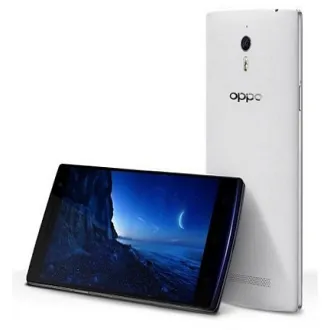Oppo 1105 USB Drivers will help your Windows computer recognize your Android device. Then you can transfer files from computer to Android or even install the stock or custom ROM to your Android device.
Network: GSM, CDMA, CDMA2000, LTE, TD-LTE, GPRS, EDGE, EV-DO
Display: Primary: IPS LCD 4.5" 854 x 480 pixels 16M colors
FWVGA, 218 ppi
: Secondary:
Camera: Primary: 5 MP 2592 x 1944 pixels LED flash
Auto-focus, HDR, Geo-taggingFace and smile detection
: Video: 1920 x 1080 pixels
1080p@30fps
: Secondary: 2 MP 1600 x 1200 pixels
CPU: Chipset: Qualcomm Snapdragon 410 MSM8916
: CPU Speed: 1.2 GHz
: GPU: Qualcomm Adreno 306
Memory: RAM: 1 GB
: Memory Card: MicroSD, Up to 128 GB
OS: System: Color OS 2.0 Based on Android 4.4 KitKat
General: SIM: Micro-SIM, Dual-SIM
: Dimension: 132 x 65.8 x 9.2 mm
: Weight: 132 g
: Released: 2014, November
: Colors: white
Connectivity: USB:
Micro-USB 2.0 OTG
: WI-FI:
802.11 b/g/n, DLNA 1
: Infrared:
: NFC:
: Hotknot:
: HDMI:
GPS: A-GPS
: Bluetooth: 4.0 A2DP, LE
Features: Sensors: Accelerometer, Proximity, Waterproof, Dustproof, Shock resistant:
Sound: Headphone: 3.5mm
Battery Capacity: 1800 mAh Li-Ion
Step 1 — Download and extract the Android USB Driver to your PC.
Step 2 — Click Start (Windows) -> Control Panel -> Device Manager (Select Device Manager).
Step 3 — On the Device Manager window find and click on computer name to select Add legacy hardware.
Step 4 — Select Next
Step 5 — Selext Install the hardware that I manually select from a list (Advanced), and click the Next
Step 6 — Select Show All Devices afterward click Next button again.
Step 7 — Click the Have Disk button.
Step 8 — Click Browse button to find the extracted Android ADB Driver -> android_winusb.inf and click on Open.
Step 9 — Click OK.
Step 10 — Now select the Android ADB Interface -> click Next button.
Step 11 — Click Next button again.
Step 12 — Windows Security box will appear, to confirm whether you really want to install the Android USB Driver, so just choose the Install this driver software anyway.
Step 13 — Once you clicked the Finish button, then repeat from step 2 to choose Android Composite ADB Interface.
Step 14 - Done.
